The 200-series from Dunlop is an icon in the industry. How is the latest iteration of these racquets? Check out our Dunlop CX 200 Review.
You might remember racquets like the Muscleweave 200, Hotmelt 200 or Aerogel 200? All classics in terms of control and feel. The game of tennis has speed up with polyester strings and racquets are in most cases lighter, stiffer and with more dampening than these types of legends. You get forgiveness and power for a slight loss of feel and control. Everything is a compromise and you cannot get everything you want in one racquet.
Specs and Tech
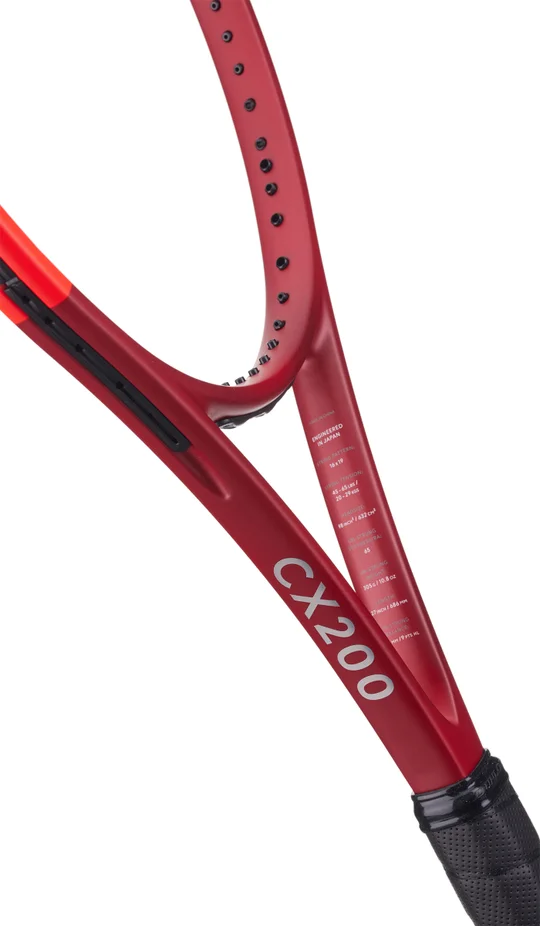
Like in the Dunlop CX 400 Tour review, we can talk about a new mold for 2024. I am always happy to see the racquet brands trying something different when updating models. The specs are similar but the beam is boxer and nicer in hand.
The racquet comes with Powergrid Stringtech+, which features wider cross-string spacing to enhance spin and power. Most modern racquets come with some form of vibration dampening built in and in this case it is called Vibroshield, which is a elastic material placed in the midsection of the hoop and the shaft.
Specifications
| Head Size: | 98 in / 632 cm |
| Length: | 27in / 68,5cm |
| Strung Weight: | 323g / 11,4oz |
| Unstrung Weight: | 305g/10,8oz |
| Balance: | 32,08cm / 7 pts HL |
| Unstrung Balance: | 31,5cm/9 pts HL |
| Swingweight: | 314 |
| Stiffness: | 64 |
| Beam Width: | 21,5mm / 21,5mm / 21,5mm |
| Composition: | Sonic Core Infinergy/Graphite |
| Racket Colours: | Red |
| Grip Type: | Dunlop Viper Dry |
| String Pattern: | 16 Mains / 19 Crosses Mains skip: 8T,8H |
| Tension: | 20-29kg / 45-65lb |
Regarding the specifications, my test racquet came in at a 270 unstrung swing weight. I tested it with my go-to test string Solinco Hyper-G Round and that got the racquet to 300 swing weight. This is 14 points below the Tennis Warehouse test sample and makes the racquet too unstable and power-lacking. I thought this was poor quality control, but Beckett from Tenncom also got a 262 unstrung swing weight, so it might be intended to be a platform racquet ready for customization. I don’t think that is a viable sales strategy, though and will confuse and disappoint customers.
Video for the Dunlop CX 200 Tour
How does it play?
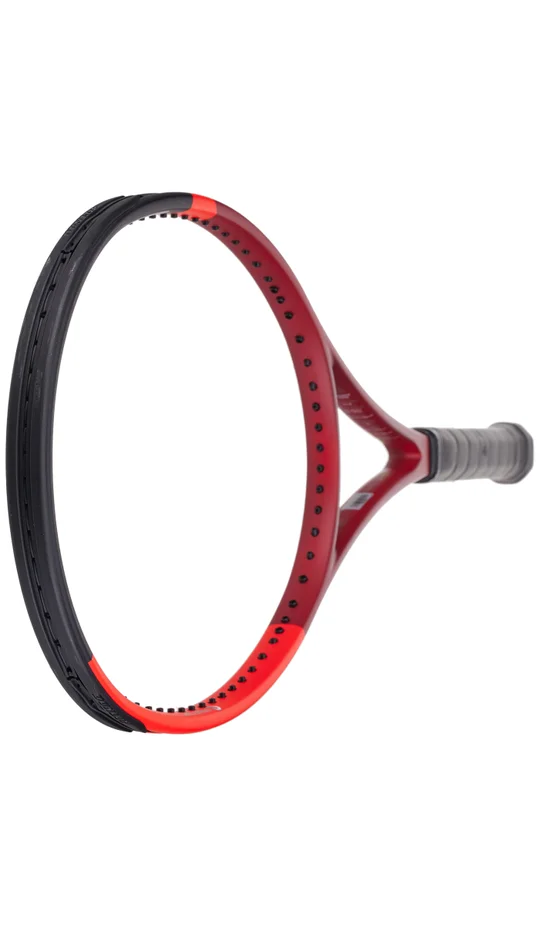
I tested this racquet alongside Nikki, and he was disappointed with the low specifications. In stock form, he deemed the racquet “unplayable”. And in a way, he is right, a player racquet focused on control can not be played successfully at 300 strung swing weight. Any tape of heavy ball will make the racquet twist and you will not be able to generate enough force on your shots.
So after that I added about 6 grams to the hoop to get it close to a 320 strung swing weight. I also counterbalanced it in the handle to ensure the racquet retains its balance. As expected, the racquet was not as easy to swing anymore, but it carried a lot more confidence in meeting heavy shots and gave me more put-away power. Once customized, it is clear that this is a very good racquet at the right specifications.
The feel on impact is nice, with a good dwell time in the string bed, but nothing excessive. The launch is not overly high or low. You can generate some spin, but it is definitely a racquet made for players who can bring their own game and who don’t need a lot of help from the frame.
The sweet spot is relatively generous (with the customization) and you have enough touch for a deft drop shot or a precise volley.
Comparisons
The Dunlop CX 200 can be compared to racquets like the HEAD Radical MP, Wilson Blade 98 V9 16/19, Tecnifibre TF40 and Babolat Pure Strike 98 16/19.
On the power scale it is more similar to the Blade and Radical, then the more powerful Strike 98.
In terms of feel it is also in that region, maybe most similar to the TF40, but overall I think on impact the CX 200 has the best feel. The Radical is quite direct, which is good but not overly exciting, the Blade 98 V8 is quite dampened (V7 was better in feel, but not sure about overall performance), the first TF40 is somewhat similar in response to the new CX 200. The Pure Strike is the stiffest and the most powerful.
If I had to pick one racquet of all these today, I think I’d go with the Dunlop, but I need to do more direct comparisons with the Blade and Radical.
Pros and cons
Benefits: Nice feel, good balance of control and power, nice design
Cons: The swing weight is far too low. Either that is a quality control issue or bad decision-making from Dunlop.
Summary
Overall, this is a good control racquet. One of the better ones on the market. But the specifications being so low in terms of swing weight would make it difficult for someone not versed in racquet customization to enjoy. I have no idea what the reason is for this issue, but it is a shame because with some weight added the racquet is excellent and enjoyable from all areas of the court.
I do prefer the forgiveness, free power, and straight-out-of-the-box playability of the Dunlop CX 400 Tour, though.
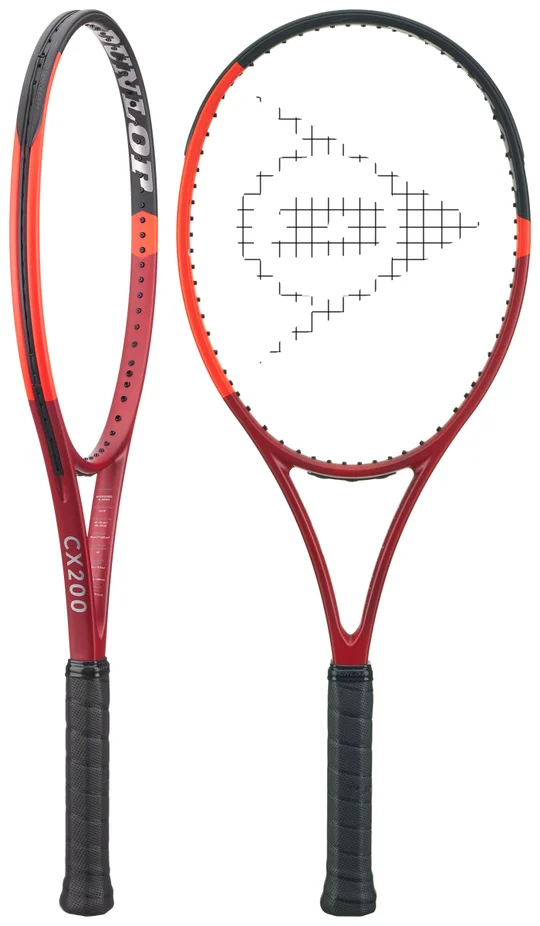











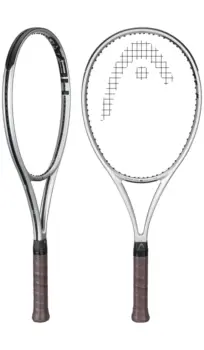
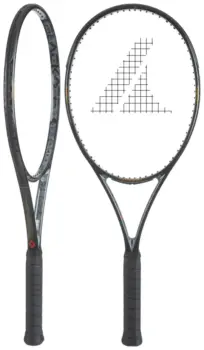


are there still qc issues?
I would say so, yes